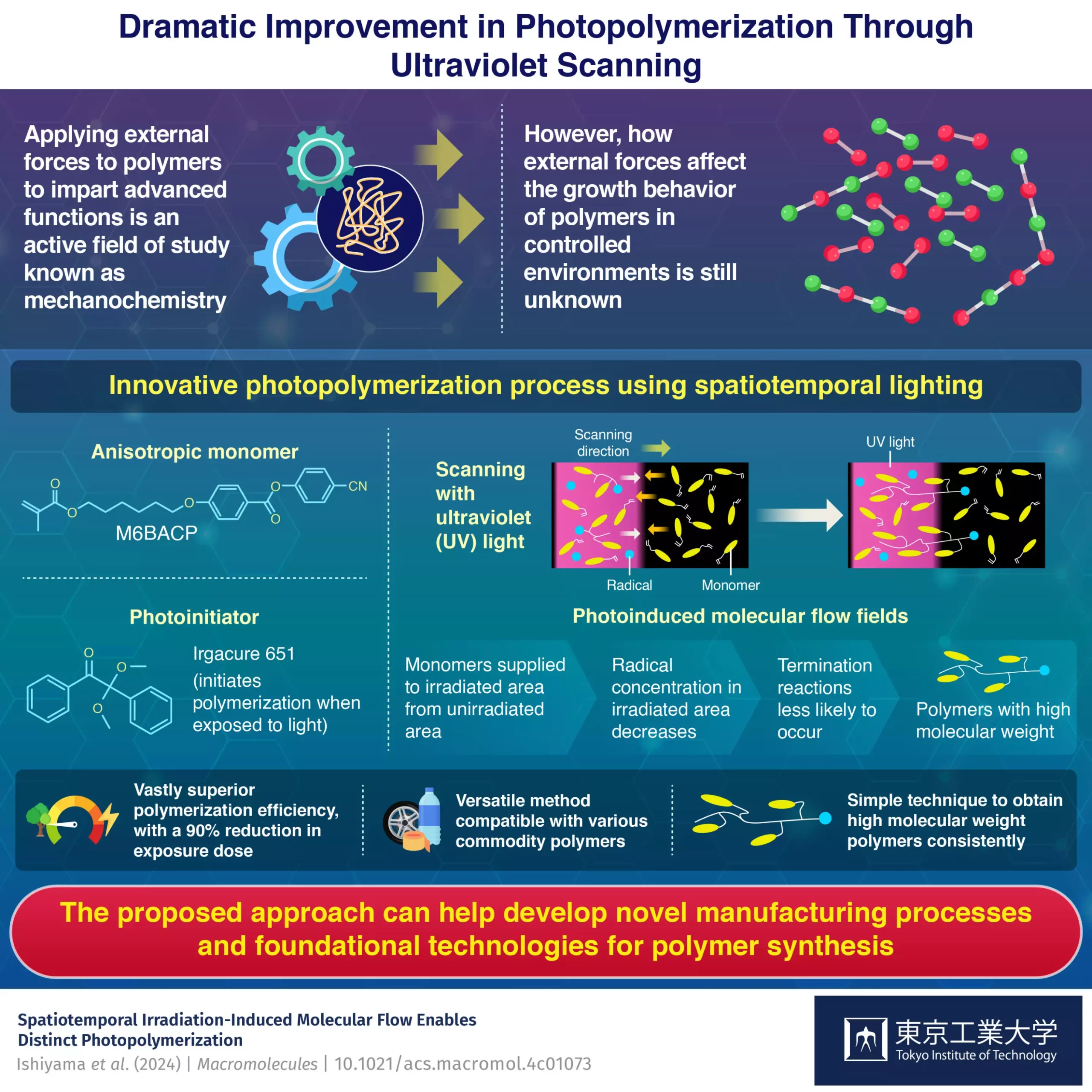Polymers are materials composed of long chains of molecules, with their properties determined by the interactions between these chains. The common understanding of polymers suggests that external forces are typically detrimental, with stretching or other mechanical actions weakening the material. However, recent research has shown that external forces can actually have positive effects on polymers by altering their properties and functionalities.
A research team led by Professor Atsushi Shishido from Tokyo Institute of Technology conducted a study on how flow fields induced by dynamic UV lighting can impact the process of photopolymerization. This study, published in Macromolecules, demonstrated a novel technique to control polymer synthesis by utilizing scanning UV light instead of uniform UV exposure.
The photopolymerization reaction in the study involved the monomer M6BACP and the photoinitiator Irgacure 651, which breaks down into reactive free radicals under UV light. By exposing the solution to UV light through a moving slit, the researchers observed significant changes in the resulting polymers. The use of scanning UV light led to high molecular weight polymers with a 90% reduction in exposure dose compared to static uniform light.
The researchers theorized that the movement of UV light induced molecular flows that impacted the diffusion of growing polymers, radicals, and monomers. This diffusion led to a more efficient polymerization process, with lower chances of termination reactions due to the distribution of radicals and monomers. The study highlights the potential for improved polymerization efficiency and reduced energy costs in industrial applications.
The developed method of utilizing scanning UV light to control polymer growth offers a simple and effective way to enhance polymer synthesis processes. This technique not only provides insights into photopolymerization reactions but also has the potential to improve industrial processes and materials. The research findings have implications for various commodity polymers, suggesting a more sustainable approach to polymer manufacturing in the future.


Leave a Reply